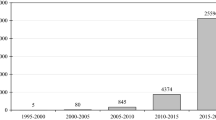Abstract
In the oil and gas industry, application of nanoparticles is becoming a more common practice. There are a number of researches on lubricating effects of nanoparticles in different applications; therefore, some fundamental studies are eminent on mechanisms and functions of skin friction reduction of nanoparticles in pipe flows. In addition, studies on coagulation and agglomeration of nanoparticle precipitation on the pipe surfaces are of practical interest. In this research, development of a miniature Reynolds apparatus is sought to study different flow regimes from laminar to turbulent. The first goal is to measure rheological properties of Newtonian and non-Newtonian nanofluids at laminar flows. The miniature Reynolds apparatus should continuously circulate 1 L or lower amounts of nanofluid and measure pressure drop and flow rates for at least three Reynolds numbers. This paper summarizes the design procedure and provides CFD simulations for the designed system. Analysis of the measured data will provide useful information on skin friction reduction and precipitation of nanoparticles on pipe surfaces.
Access this chapter
Tax calculation will be finalised at checkout
Purchases are for personal use only
Similar content being viewed by others
References
Samuel RH (2010) Friction factors: what are they for torque, drag, vibration, drill ahead and transient surge/swab analysis. Society of Petroleum Engineers, IADC/SPE Drilling Conference and Exhibition, 2–4 Feb 2010, New Orleans, Louisiana, USA
Jahns C (2014) Friction reduction by using nanoparticles in oil-based mud. M.Sc. thesis, Department of Petroleum Engineering and Applied Geophysics, Norwegian University of Science and Technology
Jirkovsky L, Bo-ot LM (2014) Taylor–Couette flow and a molecule dependent transport equation. Physica A Stat Mech Appl 415(1):205–209
Tang Z, Li S (2014) A review of recent developments of friction modifiers for liquid lubricants (2007–present). Curr Opin Solid State Mater 18:119–139
Qiu S, Zhou Z, Dong J, Chen G (2001) Preparation of Ni nanoparticles and evaluation of their tribological performance as potential additives in oils. ASME J Tribol 123:441–443
Chou R, Battez AH, Cabello JJ, Viesca JL, Osorio A, Sagastume A (2010) Tribological behavior of polyalphaolefin with the addition of nickel nanoparticles. Tribol Int 43:2327–2332
Sánchez López JC, Abad MD, Kolodziejczyk L, Guerrero E, Fernández A (2011) Surface-modified Pd and Au nanoparticles for anti-wear applications. Tribol Int 44:720–726
Hernández Battez A, González R, Viesca JL, Fernández JE, Díaz Fernández JM, Machado A (2008) CuO, ZrO2 and ZnO nanoparticles as antiwear additive in oil lubricants. Wear 265:422–428
Zhou GH, Zhu Y, Wang X, Xia M, Zhang Y, Ding H (2013) Sliding tribological properties of 0.45% carbon steel lubricated with Fe3O4 magnetic nanoparticle additives in base oil. Wear 301:753–757
Wu YY, Tsui WC, Liu TC (2007) Experimental analysis of tribological properties of lubricating oils with nanoparticle additives. Wear 262:819–825
Chou C, Lee S (2010) Tribological behavior of nanodiamond-dispersed lubricants on carbon steels and aluminum alloy. Wear 269:757–762
Elomaa O, Oksanen J, Hakala TJ, Shenderova O, Koskinen J (2014) A comparison of tribological properties of evenly distributed and agglomerated diamond nanoparticles in lubricated high-load steel–steel contact. Tribol Int 71:62–68
Pak BC, Cho Y (1998) Hydrodynamic and heat transfer study of dispersed fluids with submicron metallic oxide particle. Exp Heat Transfer 11(2):151–170
Pottuz LJ, Vacher B, Ohmae N, Martin JM, Epicier T (2008) Anti-wear and friction reducing mechanisms of carbon nano-onions as lubricant additives. Tribol Lett 30:69–80
Lee CG, Hwang JY, Choi YM, Lee JK, Choi C, Oh JM (2009) A study on the tribological characteristics of graphite nano lubricants. Int J Precis Eng Manuf 10(1):85–90
Hwang JY, Lee CG, Choi YM, Cheong S, Kim D, Lee K, Lee J, Kim HC (2011) Effect of the size and morphology of particles dispersed in nano-oil on friction performance between rotating discs. Mech Sci Technol 25:2853–2857
Wang XB, Liu WM (2013) Nanoparticle-based lubricant additives. Springer, Boston, MA
Ghazvini M, Akhavan-Behabadi MA, Rasouli E, Raisee E (2012) Heat transfer properties of nanodiamond–engine oil nanofluid in laminar flow. Heat Transfer Eng 33(6):525–532. https://doi.org/10.1080/01457632.2012.624858
Esmaeilzadeh E, Almohammadi H, Nasiri Vatan S, Omrani AN (2013) Experimental investigation of hydrodynamics and heat transfer characteristics of γ-Al2O3/water under laminar flow inside a horizontal tube. Int J Therm Sci 63:31–37. https://doi.org/10.1016/j.ijthermalsci.2012.07.001
Lin JZ, Xia Y, Ku XK (2014) Friction factor and heat transfer of nanofluids containing cylindrical nanoparticles in laminar pipe flow. J Appl Phys 116(13):133513-1–133513-11. https://doi.org/10.1063/1.4896949
Lin JZ, Xia Y, Ku XK (2016) Flow and heat transfer characteristics of nanofluids containing rod-like particles in a turbulent pipe flow. Int J Heat Mass Transfer 93:57–66. https://doi.org/10.1016/j.ijheatmasstransfer.2015.09.088
Boertz H, Baars AJ, Cieśliński JT, Smolen S (2018) Numerical study of turbulent flow and heat transfer of nanofluids in pipes. Heat Transfer Eng 39(3):241–251. https://doi.org/10.1080/01457632.2017.1295739
Minakov AV, Rudyak VY, Pryazhnikov MI (2018) Rheological behavior of water and ethylene glycol based nanofluids containing oxide nanoparticles. Colloids Surf A Physicochem Eng Asp 554:279–285
Munson BR, Huebsch WW, Rothmayer AP (2012) Fundamentals of fluid mechanics, 7th edn. Wiley, Hoboken, NJ
Garcia EJ, Steffe JF (1987) Comparison of friction factor equations for non-Newtonian fluids in pipe flow. J Food Process Eng 9:93–120
Mishra PC, Mukherjee S, Nayak SK, Panda A (2014) A brief review on viscosity of nanofluids. Int Nano Lett 4(4):109–120. https://doi.org/10.1007/s40089-014-0126-3
Kwak K, Chongyoup K (2005) Viscosity and thermal conductivity of copper oxide nanofluid dispersed in ethylene glycol. Korea-Aust Rheol J 17(2):35–40
Pastoriza-Gallego M, Lugo L, Legido J, Pieiro M (2011) Thermal conductivity and viscosity measurements of ethylene glycol-based Al2O3 nanofluids. Nanoscale Res Lett 6(221):1–11
Author information
Authors and Affiliations
Corresponding author
Editor information
Editors and Affiliations
Appendix: 3D Solidworks Drawings
Appendix: 3D Solidworks Drawings
Rights and permissions
Copyright information
© 2020 Springer Nature Switzerland AG
About this paper
Cite this paper
Sedaghat, A. et al. (2020). Design and Manufacturing a Miniature Reynolds Apparatus for Testing Nanofluids. In: Bumajdad, A., Bouhamra, W., Alsayegh, O., Kamal, H., Alhajraf, S. (eds) Gulf Conference on Sustainable Built Environment. Springer, Cham. https://doi.org/10.1007/978-3-030-39734-0_8
Download citation
DOI: https://doi.org/10.1007/978-3-030-39734-0_8
Published:
Publisher Name: Springer, Cham
Print ISBN: 978-3-030-39733-3
Online ISBN: 978-3-030-39734-0
eBook Packages: EnergyEnergy (R0)







